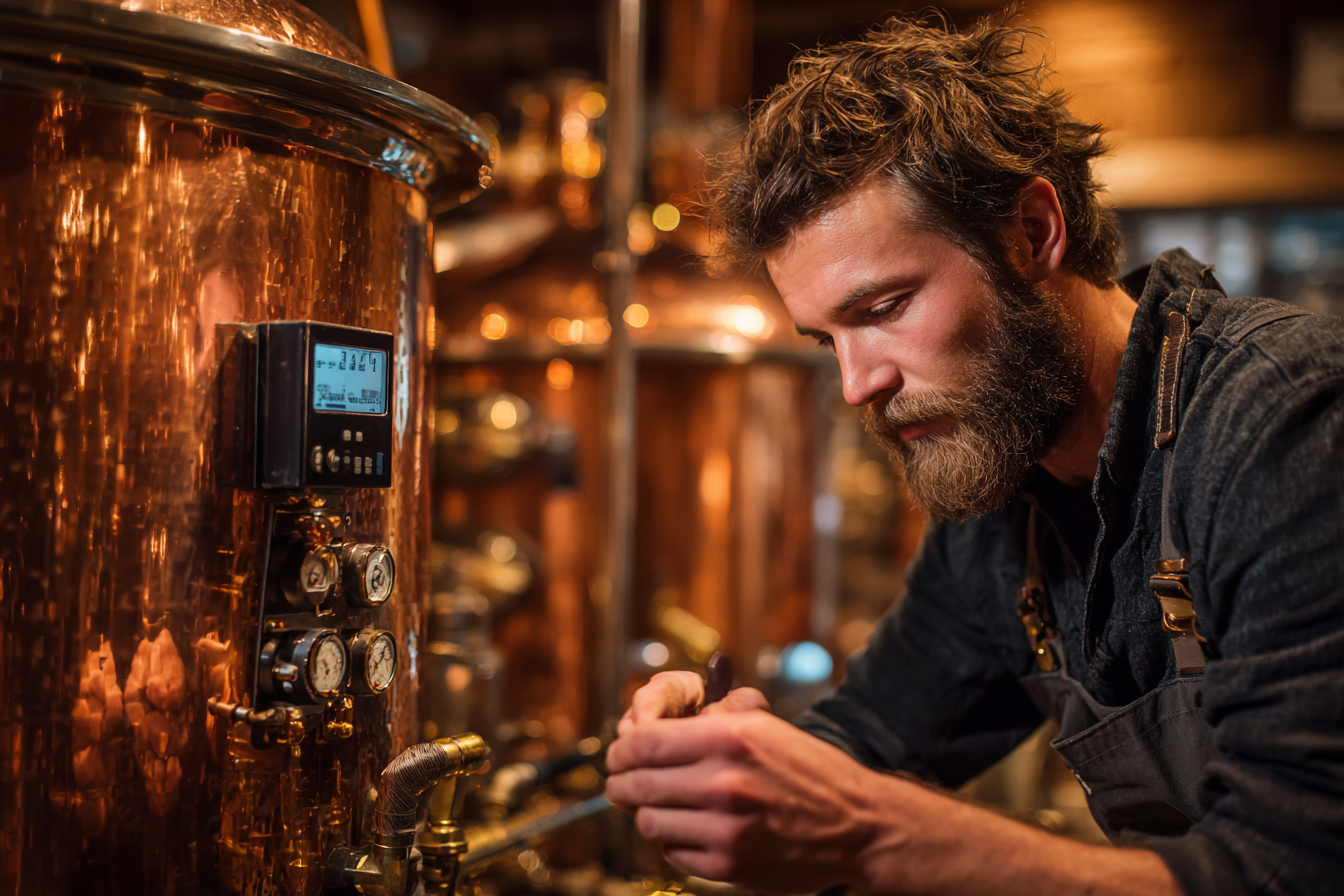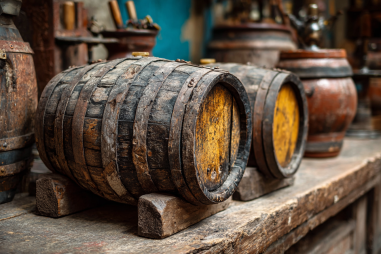Brewing Grodziskie beer is a rewarding challenge that taps into centuries-old traditions. This uniquely Polish style, known for its distinct smoky aroma and lively, crisp finish, can be tricky to master without the right techniques. From malt selection to fermentation control, every step influences the delicate balance of flavors that define a great Grodziskie. Whether you’re a homebrewer eager to replicate this historical brew or a seasoned pro looking to refine your approach, these expert tips will help you craft a beautifully smoky and refreshingly bright Grodziskie beer.
Selecting Quality Oak-Smoked Wheat Malt
The cornerstone of authentic Grodziskie beer is its malt — specifically, oak-smoked wheat malt. The choice and quality of malt will significantly impact the beer’s characteristic smoky flavor and mouthfeel. When sourcing oak-smoked wheat malt, look for malt made with true oak smoke rather than cheaper alternatives like beech or artificial smoke flavorings, which can produce off-putting or overly aggressive notes.
For the malt base, 100% wheat malt is traditional, contributing to the beer’s light body and creamy texture. This story malt generally carries a mild smokiness that permeates the brew rather than overwhelming it. Make sure the malt is fresh and properly stored to avoid stale or cardboard-like flavors, which can complicate the delicate balance of the final beer.
Managing Smoky Flavors for Balance
One of the biggest brewing challenges with Grodziskie is achieving the perfect smoky flavor balance. Too little smoke, and the beer lacks character; too much, and it becomes harsh and overpowering. Consider the following tips to manage smoke intensity:
- Blend Smoked and Unsmoked Malt: If your oak-smoked wheat malt is particularly potent, blend it with a portion of plain wheat malt to soften the smokiness.
- Adjust Smoke Levels in Mash: Use mash water and temperature to subtly influence smoke extraction. Cooler mash temperatures may produce a less intense smoke impression.
- Careful Sampling: Regularly taste your wort and fermenting beer at key stages. This helps ensure the smoke character is developing harmoniously.
Additionally, pairing smoky malt with subtle hop varieties (like Saaz or Tettnang) helps enhance the beer’s crisp and refreshing qualities without competing against the smoke.
Optimal Mash Temperature and Process Guidance
The mashing step in Grodziskie brewing is crucial for extracting fermentable sugars and influencing body and flavor. Traditionally, Grodziskie features a light and thin body, so a lower mash temperature helps achieve this profile.
Target a mash temperature between 63-66°C (145-151°F) to promote beta-amylase activity for more fermentable sugars, resulting in a drier, crisper finish. Avoid higher mash temperatures that generate more dextrins and heavier body, which can obscure the delicate smoke and hop character.
Adopt a single infusion mash with a duration of 60 minutes, ensuring full sugar conversion. Thorough mash-out at around 75°C (167°F) helps preserve the somewhat delicate malt-flavor balance and prepares the wort for efficient lautering.
Fermentation Timing and Yeast Handling
For fermentation, Grodziskie traditionally uses a clean, lager-like yeast strain, but ales and hybrid yeasts can also work, depending on your equipment and preference. The key is controlling fermentation temperature and timing to maintain a bright, crisp profile without unwanted phenolic or estery off-flavors.
- Yeast Selection: Use strains known for producing clean fermentation profiles, such as K-97 or a classic German lager yeast if you’re fermenting at cooler temperatures.
- Temperature Control: Keep the fermentation temperature steady — generally around 12-15°C (54-59°F) for lagers, or 18-20°C (64-68°F) for ales.
- Fermentation Duration: Typically, primary fermentation takes 7-10 days, followed by a cold-conditioning phase for lagers to clarify and mellow flavors.
- Yeast Health: Pitch a healthy yeast starter to ensure a strong fermentation and avoid sluggish or stuck fermentations.
Fermentation plays a vital role in preserving the beer’s lightness and ensuring the smoky malt remains a highlight without interference from fruity or spicy fermentation byproducts.
Carbonation and Packaging Advice
Grodziskie is known for its pronounced carbonation, often creating a sparkling, effervescent mouthfeel. Proper carbonation levels and packaging methods are essential for preserving the beer’s signature crispness and lively character.
- Carbonation Levels: Aim for high carbonation, around 2.5-3.0 volumes of CO2. This level supports the beer’s refreshing bite.
- Natural vs. Forced Carbonation: Either method works, but natural carbonation through bottle conditioning is historically accurate and can enhance mouthfeel and complexity if done carefully.
- Packaging: Use light-protected containers to minimize oxidation and light-strike, which can spoil delicate smoky flavors. Brown or green bottles, or cans, are recommended.
Proper carbonation also helps in balancing smoke with a crisp, bubbly finish — a hallmark of this style.
Troubleshooting Common Issues
Even with careful planning, challenges can arise when brewing Grodziskie. Here are some common problems and solutions:
- Overpowering Smoke: If the beer is too smoky, try using less oak-smoked malt or blend with unmalted wheat. Also, reduce mash/dough-in temperatures to limit smoke extraction.
- Off-Flavors from Yeast: Maintain strict fermentation temperature controls and pitch healthy yeast to prevent phenols or esters that clash with malt flavors.
- Cloudiness or Haze: Wheat beers tend to be hazy, but excessive haze may indicate protein or yeast issues. Use proper cold conditioning and fining agents if clarity is desired without harming character.
- Flat or Low Carbonation: Monitor priming sugar levels carefully or check CO2 pressure if force carbonating to reach the sparkling finish typical of Grodziskie.
Remember, patience and attention to detail go a long way toward troubleshooting and refining your brew to capture the essence of Grodziskie.
Bringing It All Together
Brewing Grodziskie beer demands a blend of tradition, precision, and artistry. From sourcing authentic oak-smoked wheat malt to carefully controlling mash temperature and fermentation parameters, every stage shapes this historic style’s signature bright, smoky, and refreshing character.
By balancing smoky malt flavors with crisp carbonation and clean yeast profiles, even novice brewers can create an enjoyable Grodziskie beer that honors its centuries-old roots. With practice and these expert tips in hand, you’re now well-equipped to master this unique brew and impress fellow beer enthusiasts with your smoky, crisp creation.







